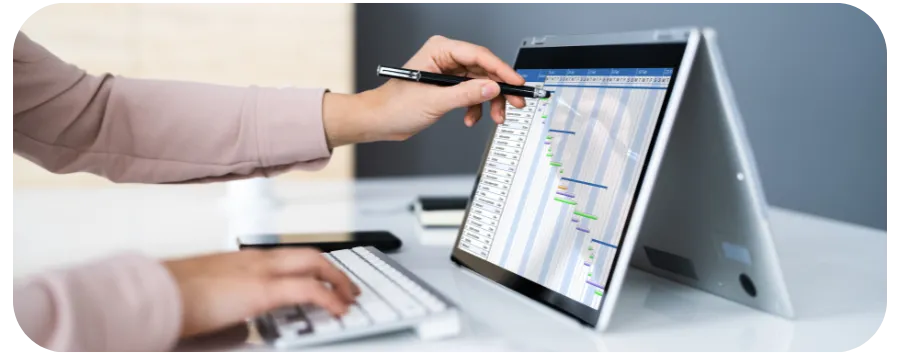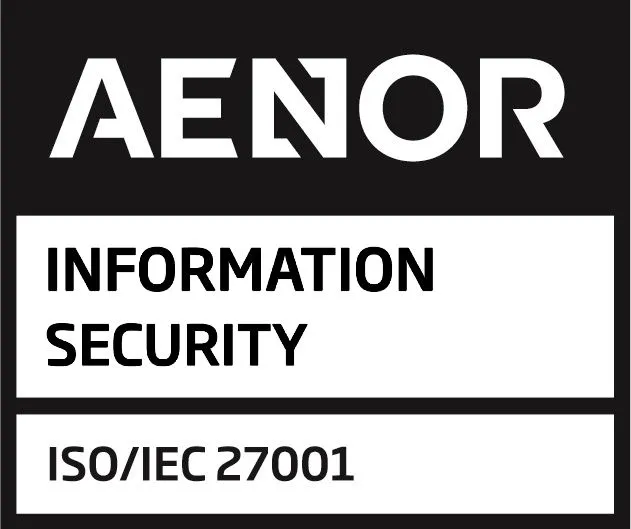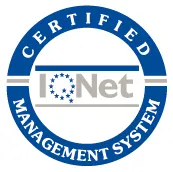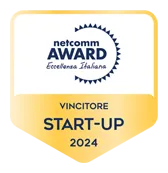
In an increasingly competitive environment, companies are looking for new ways to increase sales without relying exclusively on sales bonuses. While financial incentives have been the primary tool for energizing sales teams for years, their impact is limited today if not complemented by other, more sustainable and humane strategies.
Sales managers know their team needs something more: to feel valued, trained, visible, and intelligently challenged. That’s why, in this article, we present 5 key levers to boost commercial performance without having to raise the financial stakes. We’ll discuss training, feedback, recognition, gamification, and visibility, with a practical, results-oriented approach.
Discover how to transform your sales strategy with tools that truly motivate and build more engaged, cohesive teams that sell more.
Leverage #1: Continuous training
In a constantly evolving market, what worked yesterday can fall short today. Sales techniques, digital tools and customer needs change rapidly. That is why offering continuous training is not only a competitive advantage: it is a necessity for any sales team that wants to continue to grow.
Trained teams are better prepared to argue, respond to objections, adapt their approach to the customer and discover new business opportunities. In addition, training generates self-confidence, which translates directly into a more proactive and confident attitude towards the customer.
How to design an effective training plan
A good commercial training plan must be aligned with the real challenges of the team, the business objectives and the key skills to improve results. But it is not enough to ‘just do courses’; it must be perceived as useful, accessible and action-oriented. To achieve this:
- Diagnose real needs
Before designing any content, identify what your team really needs. Analyse indicators such as conversion rate, response times or the number of opportunities generated. Complement with internal surveys, feedback sessions or individual interviews to detect specific barriers and opportunities for improvement, both at individual and group level. - Combine theory with practice Selling is learned by doing. Therefore, avoid abstract and generic training. Prioritise content that includes dynamics such as role-playing of real situations with customers, simulations of complex objections or analysis of specific business cases.
- Encourage microlearning
Sales teams have little time to stop their activity. For this reason, content should be short, agile and focused on a single objective per piece. Videos of less than 5 minutes, training pills via WhatsApp or quick quizzes between calls are ideal formats. In addition, microlearning makes it possible to incorporate learning into dead moments of the day or as part of a weekly routine. - Make it continuous and measurable
Training cannot be a one-off event. To have an impact, it must be continuous and integrated into the business culture. Define a regular calendar (monthly, bimonthly…) with thematic blocks and clear objectives. Establish KPIs such as completion rate, improvements in commercial indicators or active participation, and review them periodically to adjust the plan according to the results and the evolution of the team.
Recommended tool
Platforms such as VIP Connect allow training to be integrated into the day-to-day work of the sales team, whether from a mobile phone or a computer. You can offer customised training pathways for both new recruits and established teams in need of renewal. Publish dynamic content and track results, thanks to lessons, quizzes and comprehensive reports.
Leverage #2: Feedback culture
Feedback is one of the most powerful – and underutilised – tools for increasing business performance. A team that receives clear, frequent and honest feedback knows where it needs to improve, recognises its achievements and feels supported along the way.
In the context of sales, feedback allows you to quickly adjust strategies, correct mistakes before they happen again and reinforce positive behaviours. Moreover, when it is given in real time, its impact is much greater, as it connects directly with the actions and emotions of the moment.
How to build an effective feedback culture
Building a feedback culture is not about filling the calendar with formal meetings. It is about normalising feedback in the day-to-day. To do this: Set clear standards:
- Set clear standards: Feedback should be constructive, respectful and improvement-oriented.
- Train leaders: Many middle managers avoid giving feedback because of insecurity. Train them to do so empathetically and effectively.
- Encourage bi-directionality: The team should also be able to give feedback upwards or between peers..
- Make it a habit: Including feedback spaces in team meetings, one-to-ones or even digital channels helps to naturalise it.
Peer recognition as an extension of feedback
One of the most powerful ways to reinforce positive feedback is peer recognition. When one colleague acknowledges the attitude or performance of another, it creates a culture of appreciation and collaboration that directly impacts the work environment.
Leverage #3: Non-monetary recognition

In commercial teams, where numbers are everything, recognition often focuses only on results. Did you sell a lot? You didn’t reach your target? Silence. But that leaves out a lot of things that are also key to making sales happen: sharing best practices, staying consistent, being willing to learn, or lending a hand to a colleague when they need it.
Non-monetary recognition comes in here as a kind of ‘emotional reinforcement’. It is a way of saying to the team: ‘We see what you do, not just what you sell’. And that has a direct effect on how people feel on a day-to-day basis. When someone feels valued beyond the numbers, their motivation goes up, they become more engaged and a much stronger connection with the company is generated.
Types of recognition aimed at the sales team
1. By business milestones
Recognizing concrete achievements such as winning a new strategic customer, exceeding cross-selling goals or recovering a lost customer drives a culture of performance without relying on a financial bonus.
2. For personal milestones
Celebrating birthdays, company anniversaries or personal achievements creates a more human connection among the team and fosters an environment of belonging.
3. By stages of the sales process
There are salespeople who are great at prospecting, others who master follow-up like no one else, and some who have the gift of closing sales. Each stage has its merit, and recognising those who do well at any point in the process helps to bring to light talents that sometimes go unnoticed. It’s not all about closing – and not all the credit should go to the closer.
4. For participation in key trainings
Valuing those who train, overcome learning challenges or help other colleagues to train, reinforces a culture of continuous improvement that is part of the way to increase sales.
5. For sharing best practices
When someone discovers a tactic that works, a useful tool or a phrase that generates impact… and shares it, they should be recognised. A team that helps each other, grows together.
6. Other specific acknowledgements
It’s also worth acknowledging things that don’t always show up in the numbers: that person who is always willing to lend a hand, who adapts without complaining when there are changes in direction, or who puts their shirt on in a complicated campaign. All of this builds a team, and yes, it also deserves to be applauded and visible
How to implement it effectively
For recognition to be sustainable and meaningful, it needs to be systematised. VIP Incentives is a platform that allows you to create customised recognition campaigns with gamified mechanics: you define specific achievements, assign differentiated points according to the level of difficulty, and offer symbolic or experiential rewards. You can even create challenges or campaigns for specific groups.
This logic of ‘recognition campaigns’ transforms the intangible into something tangible, measurable and highly motivating, without resorting to direct financial compensation.
Leverage #4: Gamification
Gamification is applying game mechanics to day-to-day work. And in sales, it can be a big boost. It’s not just about ‘making it fun’, it’s about turning tasks like prospecting or follow-ups into challenges that motivate, generate movement and keep the team focused.
When everyday actions are transformed into challenges with clear objectives and rewards, the energy changes. Every stage of the business process becomes an opportunity to advance, learn and excel.
Practical examples applied to the commercial landscape
- Weekly or monthly challenges: Who schedules the most meetings, makes the most qualified contacts or gives the best pitch of the month.
- Unlockable achievements: Recognise consistency, collaboration or growth in skills, not just closed sales
- Team missions: Collective goals that drive cooperation and a sense of belonging.
This type of dynamic keeps interest and allows each profile to find a way to stand out, whether competitive or collaborative.
Healthy competition and rankings as an extra motivator
A well-planned ranking can be a great motivator. Showing how everyone is doing in real time generates transparency and awakens the competitive spirit that many people carry inside. The key is to segment well – by areas, roles or products – so that everyone has a chance to shine and no one is left out.
Moreover, if more than just sales are recognised (such as effort, learning or innovation), the ranking ceases to be a race of a few and becomes a tool that pushes the whole team.
Tool that makes it possible
With platforms such as VIP Incentives, you can launch customised gamified campaigns: define challenges (even only for certain groups), assign points, display rankings, give prizes of different types and values… All from a simple interface that adapts to the pace of a sales team.
Leverage #5: Visibility of impact

Selling does not always give immediate results. There is effort that is not seen, follow-up that is not appreciated until weeks later, and a lot of work that remains in the shadows. Therefore, giving visibility to the impact of each commercial is key to keeping motivation high.
A person is activated when they can clearly see what they are achieving, how they are doing compared to their goals, or how much they have improved since last month. They don’t need to be told ‘you’re doing well’, because they can see it. And that gives you focus, confidence and the will to keep pushing..
How to visualise performance in real time
For this to work, data needs to be accessible, visual and useful. A good dashboard, for example, allows you to see KPIs such as opportunities generated, conversion rate or meetings closed. If there are also alerts when goals are exceeded or comparisons that show progress, the effect is immediate: the effort is translated into data, and that motivates.
The important thing is that this data is not just for managers. The team should also be able to see and understand how they are doing, without having to ask or guess.
Activating your team goes far beyond the bonus
If your goal is to increase sales, thinking only about increasing financial incentives is not enough. The bonus can help in the short term, yes, but if you really want a motivated and consistent team, you need to go further.
The five levers we have seen – training, feedback, recognition, gamification and visibility – are not abstract ideas. They are concrete tools for building a work environment where people feel valued, connected and focused. And when that happens, the results come of their own accord.
The best part: you don’t have to reinvent everything. You can start small, integrate new dynamics, try new formats and see what really activates your team. And if you need a helping hand to make it happen, tools like VIP Incentives, VIP Connect and VIP Awards are designed to do just that.
Because when people are good… sales are better.
You already have the levers you need to take your sales team to the next level. What are you waiting for?
New to Vip District? Contact us and find out what our platform has to offer!








